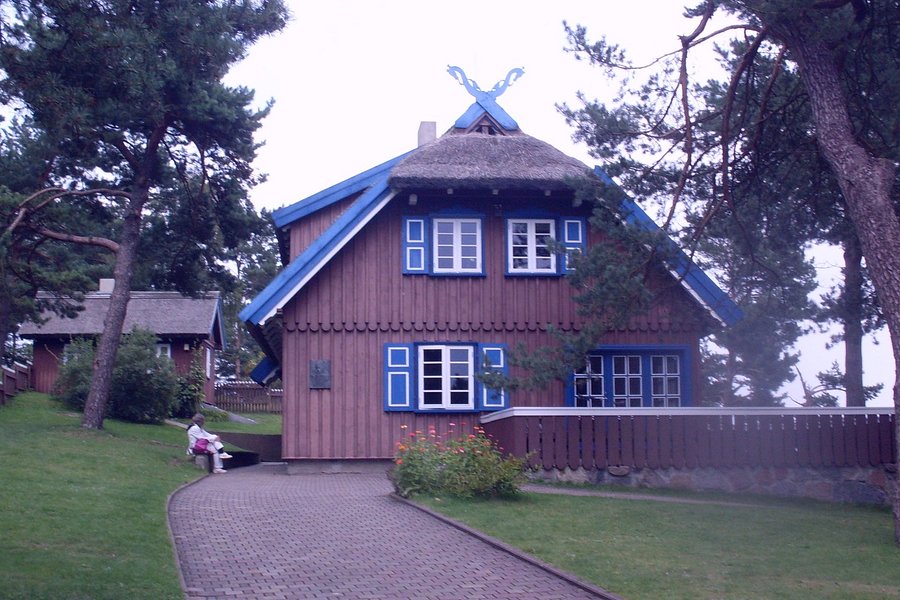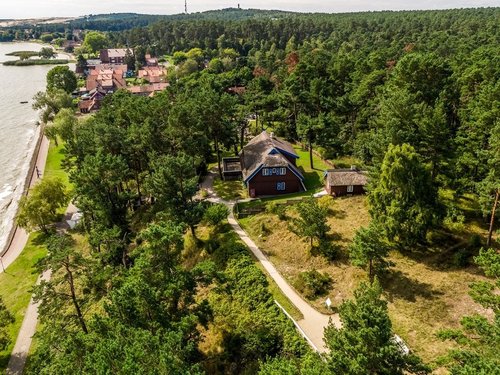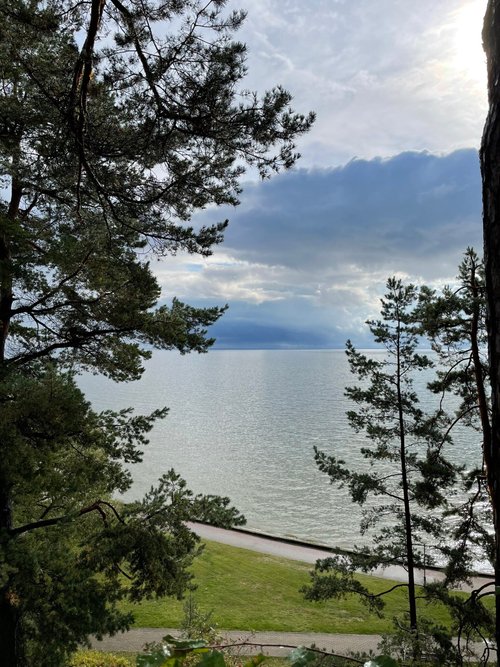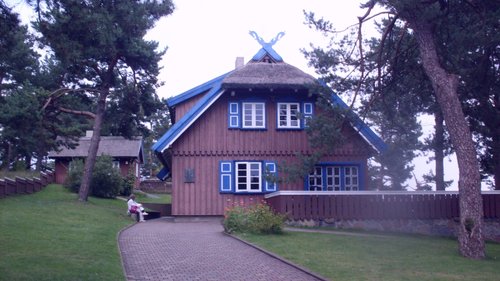Thomas Mann Museum, Klaipeda County, Lithuania
4.0 (152 reviews) Spent Ranking #5 in Klaipeda County Speciality Museums

Highest moving sand dunes in Europe
The Curonian Spit is home to the highest moving (drifting) sand dunes in Europe. In 1929 Nobel –prize -winning writer Thomas Mann visited the other town of Coronian Spit - Nida while on holiday. After it he decided to have a summer house erected on a hill above the Lagoon. The House is currently turned into Thomas Mann Culture Centre and Museum. Nearby you can visit an old cemetery of Nida, go for a walk to Parnidis sand dune, drifted by harsh winds. On it a granite sundial stands and showint the ringht time till our days. From the area at Urbo Hill, where Nida‘s Seamark stands, you can see fantastic Curonian Lagoon in front of you and vast hills of sand to your both sides.

Address
Skruzdynes g. 17, Nida, Neringa 93123 Lithuania
Mobile
Website
http://www.mann.lt/en/
Current local date and time now
Friday, May 10, 2024, 18:59
User Ratings
4.0 based on (152 reviews)
Reviews
-
4ToL_123 5:00 PM Oct 2, 2022
Worth to visit
Thomas M. chose a perfect spot on a hill above the courland lagoon for his summer house. Breathtaking view from a spot on the property, called italian panorama. This alone is worth the visit. The museum itself is nice and give some insights to not so much known aspects of his life as the complicated relation to his brother Heinrich. It is almost a miracle, that such a nice place was preserved, during turbulent Lithuanian, German, Russian and again Lithuanian times. Summary: to be recommended!

-
3DeanMurphy2020 5:00 PM Sep 16, 2016
the ‘Mann’ lived here☺
German novelist, social critic, and philanthropist Paul Thomas Mann (1875–1955) took home the 1929 Nobel Prize in Literature. His symbolic and ironic epic novels are noted for insight into the psychology of the artist and intellectuals. His brother was the radical writer Heinrich Mann, and three of his six children also became important German writers. He built a seaside retreat on the Curonian Spit, which is now the museum. When Hitler came to power in 1933, Mann and his family fled to Switzerland, as his wife was a Jew. They never again occupied the seaside cottage. When WWII exploded in 1939, he moved to the US, returning to Switzerland in 1952—three years before his death. When Soviets occupied Lithuania and many other European countries after WWII, Mann’s cottage became property of the Russian government, which allowed artists and writers it approved of to occupy the cottage with a fabulous view. Only in 2004 was the cottage converted into a museum, but few objects of “the Mann” are here. If you’re a Mann follower and want to visit the museum, early mornings are best, as tour buses arrive later in the day. This building was constructed as a family cottage, and not intended to hold 40 people milling about. There’s precious little about Mann’s works and insight to his life, or how an oppressive regime tried to control his intellect. There is a timeline at the entrance, something that can be learned from the Internet. The most impressive thing I found was the phenomenal view of the Baltic Sea, the reason Mann had his family’s retreat built at this location.



See also
More Things to do in Klaipeda County
- Points of Interest & Landmarks in Klaipeda County
- Churches & Cathedrals in Klaipeda County
- Historic Sites in Klaipeda County
- Art Museums in Klaipeda County
- Speciality Museums in Klaipeda County
- History Museums in Klaipeda County
- Fountains in Klaipeda County
- Religious Sites in Klaipeda County
- Parks in Klaipeda County
- Bridges in Klaipeda County
- Gardens in Klaipeda County
- Piers & Boardwalks in Klaipeda County
- Wineries & Vineyards in Klaipeda County
- Nature & Wildlife Areas in Klaipeda County
- Taxis & Shuttles in Klaipeda County
- Boat Tours in Klaipeda County
- Monuments & Statues in Klaipeda County
- Theaters in Klaipeda County
- Zoos in Klaipeda County
- Geologic Formations in Klaipeda County
- Beaches in Klaipeda County
- National Parks in Klaipeda County
- Ferries in Klaipeda County
- Hiking Trails in Klaipeda County
- Game & Entertainment Centers in Klaipeda County
- Shopping Malls in Klaipeda County
- Water Parks in Klaipeda County
- Amusement & Theme Parks in Klaipeda County
- Visitor Centers in Klaipeda County
- Breweries in Klaipeda County
- Art Galleries in Klaipeda County
- Sports Complexes in Klaipeda County
- Horse Tracks in Klaipeda County
- Cemeteries in Klaipeda County
- Lighthouses in Klaipeda County
- Casinos in Klaipeda County
- Universities & Schools in Klaipeda County
- Surfing & Windsurfing in Klaipeda County
- Gear Rentals in Klaipeda County
- Yoga & Pilates in Klaipeda County